Key takeaways:
- Engaging lesson plans ignite curiosity by connecting theory to real-world applications, catering to diverse learning styles.
- Effective lesson planning creates a structured yet flexible learning environment, enhancing student engagement and minimizing disruptions.
- Personalization of lesson plans, through choice and feedback, fosters deeper student investment and improves their learning experience.
- Assessment of lesson effectiveness involves informal methods, such as polls and discussions, alongside traditional testing for a comprehensive understanding of student engagement.
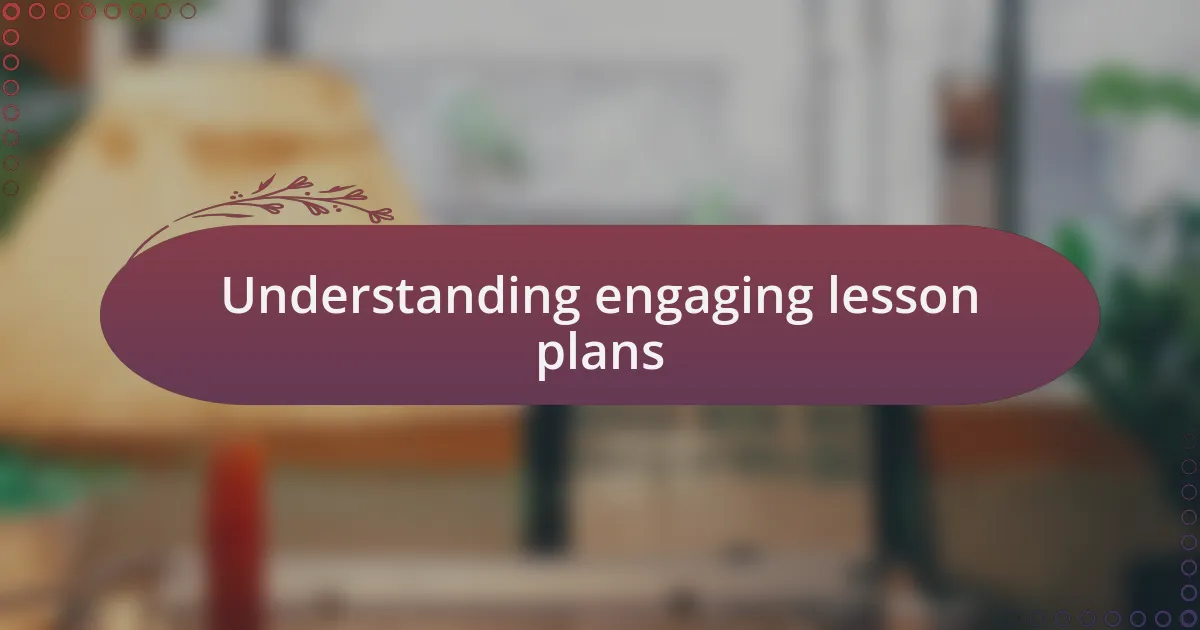
Understanding engaging lesson plans
Engaging lesson plans are all about igniting curiosity and fostering a love for learning. I remember a time when I introduced a science concept through a hands-on experiment, and the excitement in the room was palpable. It made me realize how powerful it is to connect theoretical knowledge to real-world applications.
When I craft my lesson plans, I always consider varied learning styles—visual, auditory, and kinesthetic—because not every student learns the same way. I often ask myself, “How can I make this content come alive for my students?” Incorporating different activities, such as group discussions or creative projects, helps to cater to these diverse needs and keeps students actively involved in their learning journey.
To truly engage students, I believe in building a strong emotional connection with the material. For instance, when discussing historical events, I share personal stories that resonate with my experiences or passions. This approach not only captivates the students’ attention but also demonstrates relevance, inviting them to explore their own emotions and perspectives on the topic at hand. Could you imagine the impact of a lesson that sparks personal reflection? It can transform the learning experience in profound ways.
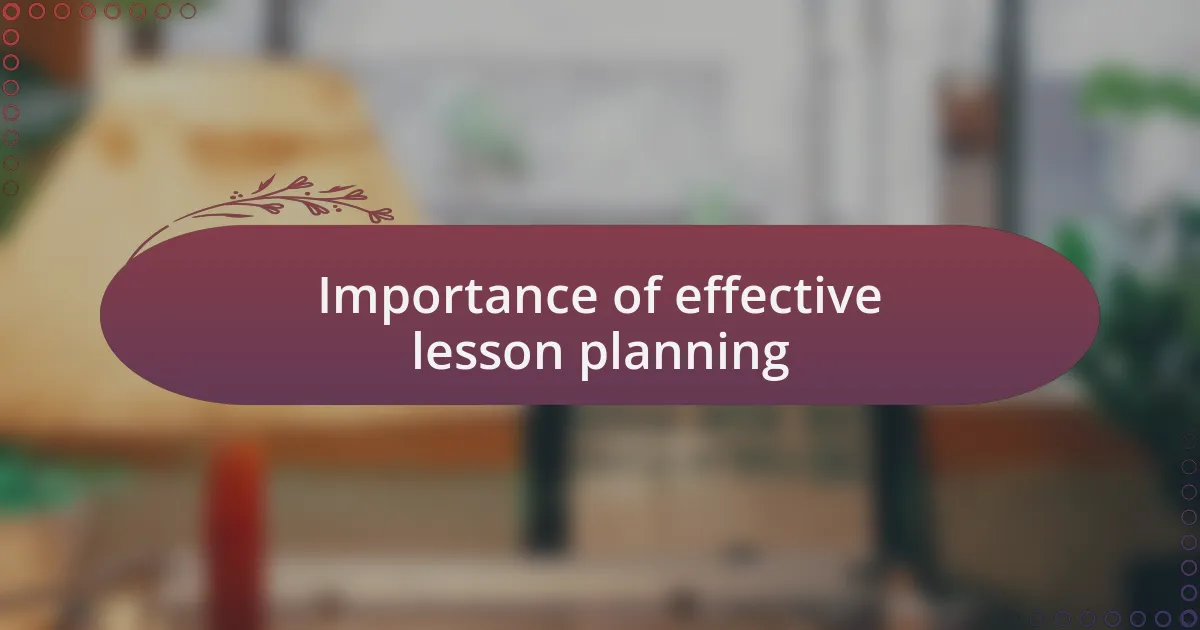
Importance of effective lesson planning
Effective lesson planning serves as the backbone of a successful classroom experience. I remember a time when I meticulously planned a literature discussion around a novel. I structured it to facilitate connections between the themes and the students’ own lives. The conversation flowed organically, and I could see how engaged they became—that moment solidified my belief that a well-planned lesson can create spaces for deeper understanding.
When I reflect on my teaching practice, it’s clear that a thoughtful lesson plan not only sets expectations but also paves the way for adaptability. There was one instance when a planned activity took an unexpected turn due to student interest. Instead of rushing to stick to my agenda, I embraced their curiosity, allowing the lesson to evolve. This flexibility transformed the session into a rich exploration of ideas. Isn’t it amazing how a simple change in approach can lead to profound insights?
The importance of effective lesson planning also extends to classroom management. I recall when I overlooked transitions between activities, leading to chaos. That experience taught me that anticipating how students will respond helps maintain engagement and minimizes disruptions. How can we expect students to thrive without a clear path? Planning thoughtfully ensures that every minute in the classroom counts, fostering an environment where learning can truly flourish.
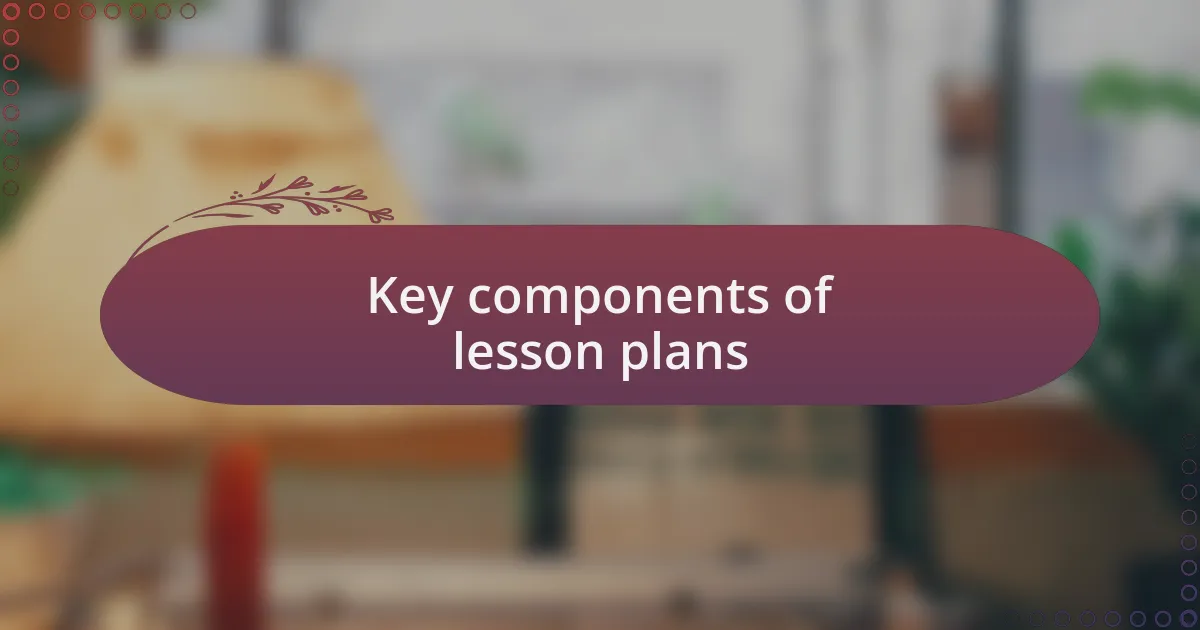
Key components of lesson plans
Key components of lesson plans
One of the essential components of a lesson plan is a clearly defined learning objective. I recall a lesson where I aimed to teach my students about hypothesis testing in science. Setting an explicit objective helped me to keep both myself and the students focused. It’s remarkable how knowing what you want to achieve can transform the dynamic of a lesson.
Another crucial element is the instructional activities designed to facilitate learning. I once included a hands-on experiment in my plans that allowed students to actively engage with the material. Watching them discover the principles of buoyancy firsthand was a powerful reminder of how impactful active learning can be. How often do we overlook the benefits of making learning tangible for our students?
Lastly, assessment strategies must be part of any lesson plan. I learned firsthand that without a means to gauge understanding, it’s easy to miss key learning gaps. I once wrapped up a math unit with a quick formative assessment that revealed some unexpected struggles among my students. This insight was invaluable; it pushed me to adapt my teaching accordingly. Isn’t it crucial to ensure that we know where our students stand on their learning journey?
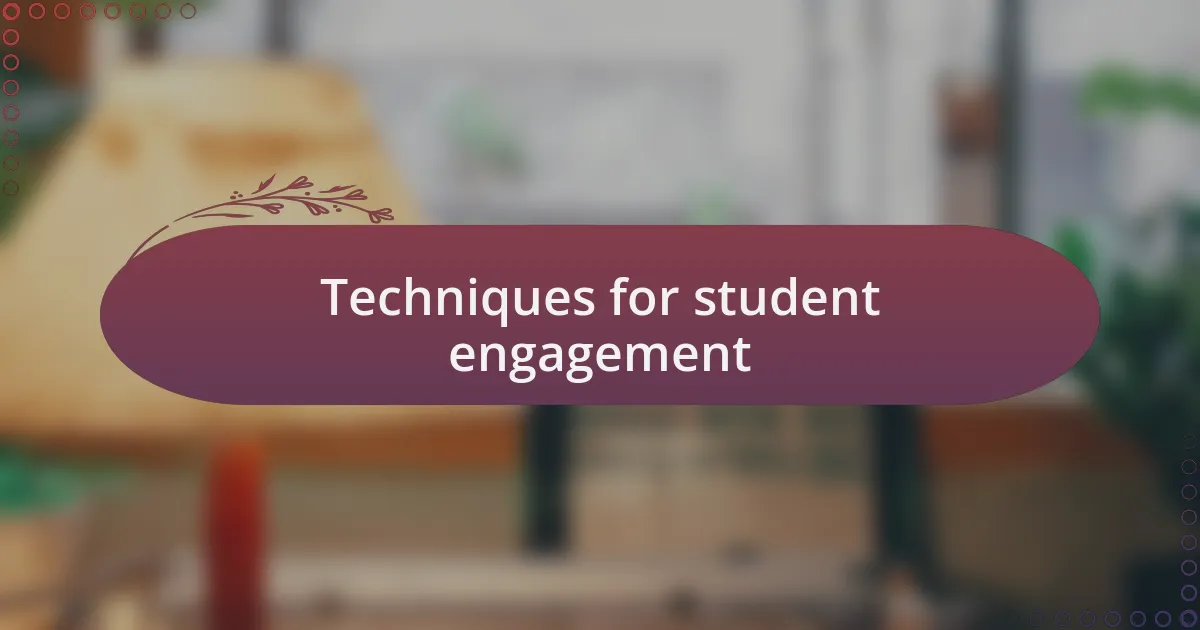
Techniques for student engagement
Utilizing interactive technology is a fantastic way to enhance student engagement. I remember introducing interactive quizzes during a history lesson, and the energy in the room instantly shifted. Students who typically sat quietly were now eagerly raising their hands to answer questions. Isn’t it fascinating how a simple tool can transform a passive classroom atmosphere into an animated discussion?
Incorporating collaborative learning opportunities is another technique that fosters engagement. I once assigned a project where students worked in small groups to research different ecosystems. The buzz of conversation, the exchange of ideas, and the shared responsibility made learning a shared adventure. Reflecting on that experience, I’ve found that students often learn better when they can bounce ideas off one another. Have you ever witnessed how teamwork can ignite passion and creativity in students?
Finally, leveraging real-world connections grabs students’ attention like nothing else. When I connected algebra concepts to practical scenarios like budgeting for a school event, I saw students’ faces light up with understanding. They started to grasp why math mattered, and that connection fueled their desire to learn. Doesn’t it make you think about the endless possibilities of linking classroom knowledge to life outside school?
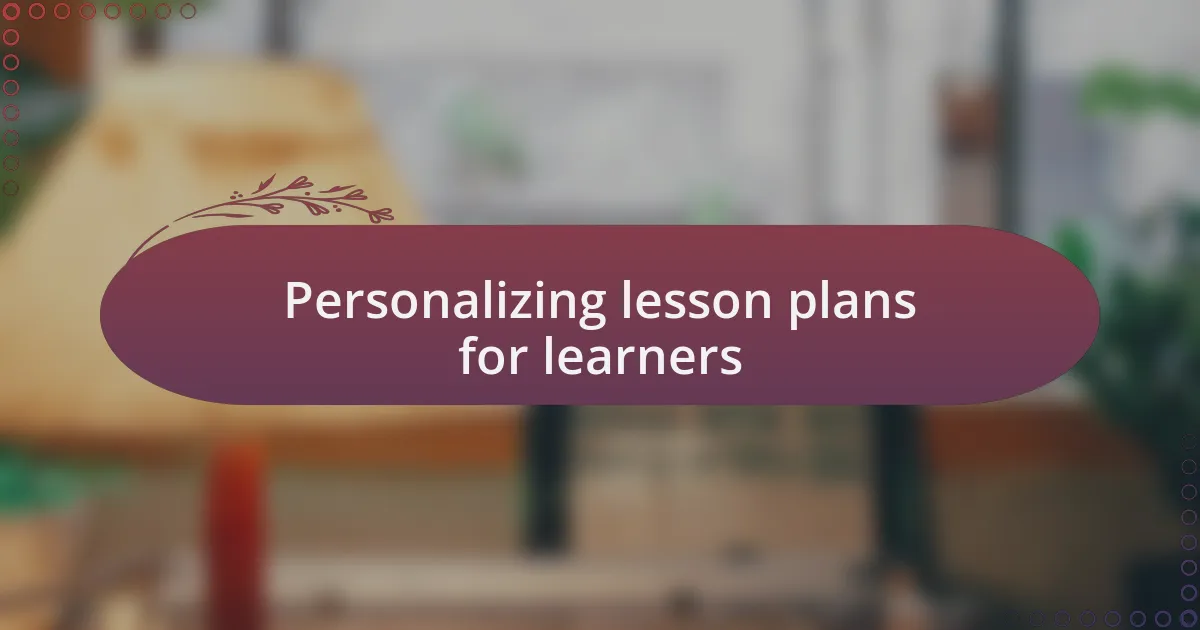
Personalizing lesson plans for learners
Personalizing lesson plans for learners is all about recognizing the unique strengths and weaknesses of each student. I vividly recall a time when I tailored a reading assignment for my class based on their individual reading levels and interests. Watching one student who typically struggled with comprehension beam as they engaged with a text about their favorite video game was incredibly rewarding. Have you ever seen how visible excitement can spark a deeper love for learning?
Another approach to personalization is offering choices in assignments. I once gave my students the option to present their understanding of a topic through videos, art, or written reports. The variety allowed them to lean into their creativity and showcase their strengths. I noticed that students who would have otherwise disengaged transformed into eager participants when given an option. Doesn’t it speak volumes about the power of choice in cultivating a learning environment?
Additionally, incorporating feedback is a vital aspect of personalizing lesson plans. I’ve spent time regularly checking in with my students and adjusting my lesson plans based on their feedback. This practice not only shows that I value their input but also helps me cater to their evolving needs. Reflecting on this process, I’ve found that when students feel heard, they become more invested in their education. Wouldn’t you agree that fostering that collaborative dynamic enriches the overall learning experience?

Assessing lesson plan effectiveness
Assessing the effectiveness of lesson plans requires more than just a glance at test scores; it’s about gauging engagement and understanding. I remember a time when I utilized quick polls during class to see which concepts resonated with my students. The immediate feedback not only helped me adjust my approach but also empowered students to voice their preferences. Isn’t it fascinating how a simple question can open the door to a more dynamic learning environment?
Beyond just tests and quizzes, I advocate for informal assessments like group discussions or exit tickets. One memorable experience was when I asked students to write down one thing they learned that day and one question they still had. Examining their responses provided me with invaluable insights into their thought processes. Doesn’t this method illustrate that assessing effectiveness can be both structured and spontaneous?
Lastly, I believe that reflecting on my own teaching after each lesson is crucial. I often jot down what worked well and what didn’t, creating a cycle of continuous improvement. There was a lesson where my enthusiasm was contagious, but the content fell flat. Reflecting on it made me realize that my passion needed to align more closely with the students’ interests. Have you ever noticed how self-assessment can lead to greater clarity in teaching strategies?